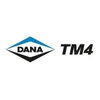Area Service Incharge
10+ Area Service Incharge Interview Questions and Answers

Asked in Jaquar

Q. How do you provide service in a remote location with limited resources?
Utilize strategic planning, technology, and local partnerships to enhance service delivery in remote areas with limited resources.
Leverage telemedicine for remote consultations, reducing the need for physical presence.
Train local community members to provide basic services, enhancing local capacity.
Implement mobile service units that can travel to remote locations on a scheduled basis.
Utilize drones for delivering essential supplies, such as medications or equipment.
Establish...read more

Asked in Okaya Power

Q. What is the voltage of a fully charged battery?
The voltage of a fully charged battery depends on the type of battery.
The voltage of a fully charged lead-acid battery is typically around 12.6 volts.
The voltage of a fully charged lithium-ion battery is typically around 3.7 volts per cell, so a 3-cell battery would have a voltage of around 11.1 volts.
The voltage of a fully charged nickel-cadmium battery is typically around 1.2 volts per cell, so a 6-cell battery would have a voltage of around 7.2 volts.
Area Service Incharge Interview Questions and Answers for Freshers
Asked in Eruka fobes Aquagard

Q. How would you explain the ROI of a new service center to a non-technical person?
ROI for a new service center can be explained to a non-technical person by highlighting the financial benefits and cost savings.
Explain that ROI is a measure of the profitability of an investment, calculated as the ratio of the net profit to the initial investment.
Use simple examples to illustrate how setting up a new service center can lead to increased revenue and reduced costs, resulting in a positive ROI.
Highlight the long-term benefits of investing in a new service cente...read more

Asked in Okaya Power

Q. What is the specific gravity of a fully charged battery?
The specific gravity of a fully charged battery is typically around 1.265 to 1.280.
Specific gravity is a measure of the density of a substance compared to the density of water.
In the context of batteries, specific gravity is used to determine the state of charge.
A fully charged battery usually has a specific gravity of around 1.265 to 1.280.
Specific gravity can be measured using a hydrometer or a refractometer.

Asked in Jaquar

Q. What are your strengths and areas for improvement?
I excel in problem-solving and communication, while I aim to improve my time management skills for better efficiency.
Strong analytical skills: I successfully resolved a complex service issue that improved customer satisfaction by 20%.
Effective communication: I regularly conduct training sessions for team members, enhancing their understanding of service protocols.
Adaptability: I quickly adjusted to new software tools, leading my team through the transition with minimal disrup...read more

Asked in Bull Machines

Q. How can air be bled from the brakes?
Brakes can remove air bleeding by compressing the brake fluid and forcing out any air bubbles.
Brake fluid is incompressible, so when the brakes are applied, the fluid is forced through the brake lines and calipers, pushing out any air bubbles.
Bleeding the brakes involves removing any air bubbles from the brake lines and replacing old brake fluid with new fluid.
Air bubbles in the brake lines can cause a spongy brake pedal and reduced braking performance.
Regular brake maintenan...read more
Area Service Incharge Jobs



Asked in Engineering Inspection Company

Q. What is the difference between AC and DC voltage?
AC voltage alternates direction periodically, while DC voltage flows in one direction constantly.
AC voltage changes direction periodically, while DC voltage flows in one direction constantly
AC voltage is commonly used in household appliances, while DC voltage is used in batteries and electronic devices
AC voltage can be easily converted to different voltage levels using transformers, while DC voltage requires more complex conversion methods

Asked in Okaya Power

Q. How many charging current of battery
The charging current of a battery depends on its capacity and the charging method used.
The charging current is typically measured in amperes (A).
For example, a small smartphone battery may have a charging current of around 1-2A, while a car battery may have a charging current of 10-20A.
The charging current should be within the recommended range specified by the battery manufacturer to ensure safe and efficient charging.
Fast charging technologies, such as Qualcomm Quick Charge...read more
Share interview questions and help millions of jobseekers 🌟


Asked in Bull Machines

Q. How can airlocks be removed?
Air lock can be removed by releasing the trapped air from the system.
Identify the location of the air lock
Turn off the water supply and open the affected tap or valve
Allow the trapped air to escape by opening the highest point in the system
Once water starts flowing smoothly, close the tap or valve and turn on the water supply
Repeat the process if necessary

Asked in Fleetguard Filters

Q. What are your Key Result Areas (KRA)?
Key Result Areas (KRA) for an Area Service Incharge focus on service delivery, team management, and customer satisfaction.
Service Delivery: Ensure timely and efficient service to clients, e.g., reducing response time by 20%.
Team Management: Lead and motivate the service team, e.g., conducting weekly training sessions to enhance skills.
Customer Satisfaction: Monitor and improve customer feedback scores, e.g., achieving a 90% satisfaction rate.
Operational Efficiency: Streamline...read more

Asked in Honda Motorcycle & Scooter

Q. What are blow-by gases?
Blow-by gases are the gases that escape past the piston rings into the crankcase of an internal combustion engine.
Blow-by gases are a mixture of unburned fuel, air, and combustion gases.
They can cause oil contamination and increase engine wear.
Blow-by gases can be reduced by maintaining proper engine compression and using high-quality oil.
Excessive blow-by gases can be a sign of engine problems such as worn piston rings or cylinder walls.
Blow-by gases can also contribute to a...read more

Asked in Sony

Q. What is the difference between LED and LCD?
LED stands for Light Emitting Diode and produces light using a semiconductor, while LCD stands for Liquid Crystal Display and requires a backlight to produce images.
LED uses less energy compared to LCD
LED displays have better contrast and color accuracy
LCD displays require a backlight to illuminate the screen
LED displays are thinner and lighter than LCD displays
Examples: LED TVs, LED monitors vs LCD TVs, LCD monitors

Asked in Okaya Power

Q. 12.70V to 13.00V of Inverter battery
The voltage range of 12.70V to 13.00V is considered optimal for an inverter battery.
The voltage range ensures efficient performance and longevity of the battery.
A voltage below 12.70V indicates a discharged battery, while a voltage above 13.00V may indicate overcharging.
Regular monitoring and maintenance of the battery's voltage is important to ensure its proper functioning.
Examples of actions to take based on the voltage reading: charging the battery if below 12.70V, adjusti...read more

Asked in Okaya Power

Q. How many batteries have discharged?
The number of battery discharges is not provided.
No data available on the number of battery discharges.
Unable to provide a descriptive answer without the necessary information.

Asked in Honda Motorcycle & Scooter

Q. Types smoke from engine
Types of smoke from an engine include white, blue, and black smoke.
White smoke can indicate a coolant leak or a problem with the fuel system.
Blue smoke can indicate burning oil, which could be caused by worn piston rings or valve seals.
Black smoke can indicate an issue with the air/fuel ratio, such as a clogged air filter or faulty fuel injectors.
Other colors of smoke, such as gray or yellow, may also indicate specific issues with the engine.
It is important to identify the co...read more

Asked in Dana TM4

Q. What is the working principle of a motor?
The working principle of a motor involves the interaction between magnetic fields to produce motion.
Motors convert electrical energy into mechanical energy
They rely on the interaction between magnetic fields to create motion
The direction of the current and the orientation of the magnetic field determine the direction of motion
Common types of motors include DC motors, AC motors, and stepper motors
Interview Questions of Similar Designations
Interview Experiences of Popular Companies






Calculate your in-hand salary
Confused about how your in-hand salary is calculated? Enter your annual salary (CTC) and get your in-hand salary


Reviews
Interviews
Salaries
Users










